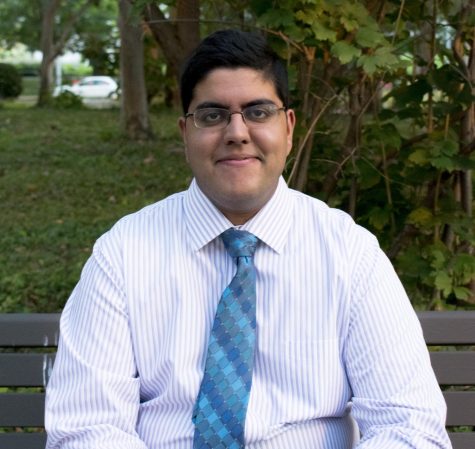Researcher finds biological mechanisms behind deadly type of breast cancer
February 28, 2014
Cancer is one of the toughest diseases to research, but recently Dr. William Schiemann identified critical mechanisms that allow for a deadly type-negative breast cancer to form.
Schiemann was interested in biology during his undergraduate studies. He figured out that he didn’t like hospitals and working with sick people, so he decided to get a job at a lab and fell in love.
“It was just so much fun,” Schiemann says.
A couple years after his postdoctoral experience, he was invited to Case Western Reserve University for a position in the cancer center. He ended up helping lead a new breast cancer program, paving the way to his current line of work: the triple negative breast cancer.
The cancer is termed after its lack of the ER, PR or HER2 receptors. Located on the cell’s outer membrane, these receptors can enter or induce a molecular change inside the cell if they encounter certain molecules. The lack of these receptors make the cell unresponsive to current treatments, because these molecules can’t interact with it.
According to Schiemann, no FDA approved drugs currently treat this type of cancer. Instead of focusing on cellular receptors, Schiemann studies the compound TGF-beta, a protein that controls cell growth. However, once tumors begin growing, TGF-beta begins acting unpredictably.
“For reasons we don’t understand, as tumors become more aggressive, they become addicted to TGF-beta. It switches teams,” Schiemann explains, reclining in his rolling chair.
The protein activates epithelial–mesenchymal transition (EMT), which can cause cell growth in an embryo or help a wound heal, but it also allows tumors to become more evasive and escape into the bloodstream. What Schiemann found was that when TGF-beta activates a protein termed “wave 3” in tumors, they metastasize. The goal now is to stop TGF-beta from expressing wave 3.
“We’ve got a new nanoparticle that in-vitro can make these cells eliminate wave 3 expression. And we’re starting to get sensitization,” Schiemann says.
Sensitization makes cancer cells that are normally resistant to drugs susceptible. Schiemann has his work cut out for him. Luckily, his sense of humor keeps him sane.
The researcher’s desk contains many modern conveniences such as a laptop with an attached cooling system, an extraneous keyboard and mouse and even a large monitor. He also has a coffee maker and a printer. The only thing out of place is his jar.
Jars are one of the most formidable of all stereotypical research-doctor horrors. The medieval doctor’s method of storage sends chills to any viewer. However, Schiemann’s has less of a sinister purpose.
“It was originally called STARS, Strategic Threats Against Renegade Sloppiness,” he explains.
Supposedly, Schiemann keeps his lab underlings in order by having them pay a quarter into the jar when they skip out on a job. He would then use the money to take them out to lab lunches. After this, everybody in his lab kept up with his or her work.


